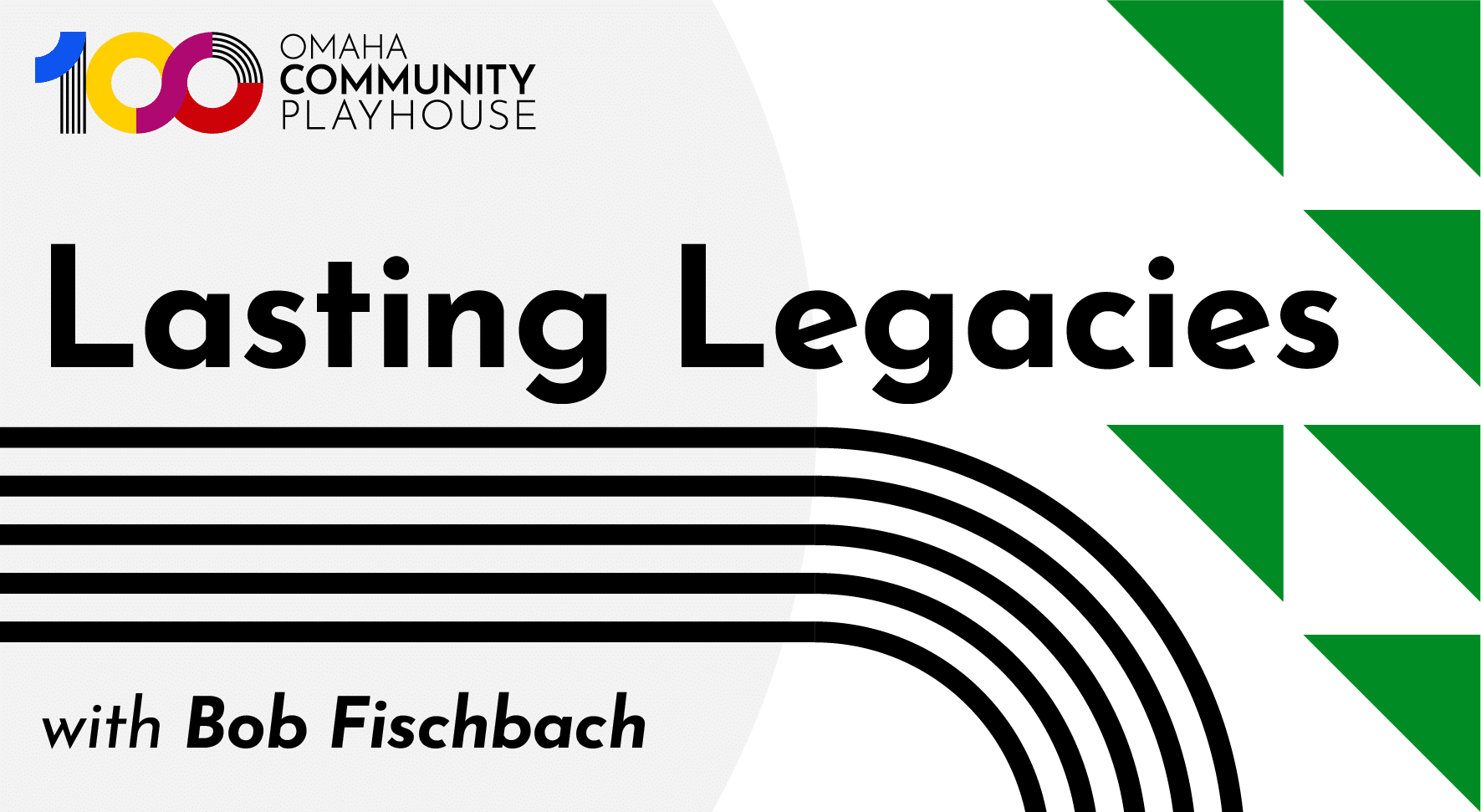
It takes a village of extremely giving people to keep live theatre alive.
From its start, the Omaha Community Playhouse’s lifeblood has come from a generous philanthropic and business community, dedicated staff, loyal patrons and a huge army of volunteers — including nearly all the onstage talent.
Each time in its first hundred years that new challenges clouded OCP’s future, key individuals, companies and foundations stepped up.
On Sept. 24, 1924, Playhouse founders included noted architect Alan McDonald, who helped design Joslyn Art Museum; Katherine Baxter, wife of the head of Kilpatrick’s Department Store; and John Gamble, a bank officer who was the Playhouse’s first treasurer. Real estate mogul N.P. Dodge’s wife was among the first to buy shares in a start-up capital campaign.
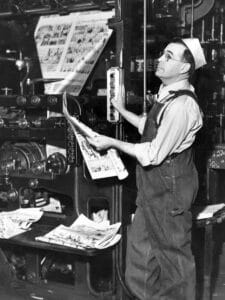
Alan McDonald
After a financially disastrous third season, the Playhouse almost didn’t see a fourth in 1928-29. On the eve of the Great Depression, it was $2,600 in debt and had just lost its rented home (Cooper Dance Studio near 40th and Farnam Streets) and its director, Greg Foley.
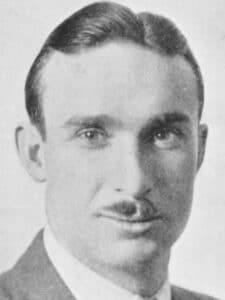
Greg Foley
That’s when Genevieve Baldwin Guiou came to the rescue. Widow of a lumberyard owner and granddaughter of a bank founder, OCP’s new board chair Guiou hired flamboyant Bernard Szold to direct and tapped McDonald to quickly design a “temporary” theatre.
Sarah Joslyn, a wealthy widow, provided the site, a cow pasture just west of her castle home at 40th and Davenport Streets. Sarah’s carriage house soon stored Playhouse costumes.
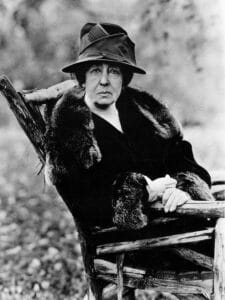
Sarah Joslyn
McDonald and Guiou Lumber built the original Playhouse in less than 30 days. Opening Oct. 30, 1928, the 252-seat space was home for an unexpected 31 years. Shortly after Joslyn died in 1940, her estate forgave the theatre’s $15,000 mortgage.
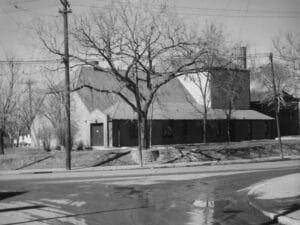
40th and Davenport Streets
During World War II, director Kendrick Wilson began his 25-year OCP run coping with a shortage of male actors. Wilson himself was drafted and wounded in battle, but the shows went on.
By 1955 the Playhouse had outgrown its “temporary” home. Former board chair Clarence Teal and J.C. Penney executive M. Cooper Smith led a four-year building drive, while Zack Warren (husband of Harriet Fonda, Henry’s sister) chaired the board.
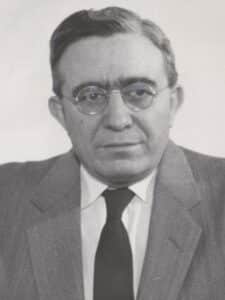
Clarence Teal
Henry Fonda and Dorothy McGuire, whose Broadway and movie careers began at OCP, kicked things off that spring, starring in The Country Girl. The benefit show marked the acting debut of Henry’s teen daughter, Jane, and raised $27,000 toward a new 520-seat theatre.
Omaha businessman Robert Dillon donated OCP’s site at 69th and Cass Streets. When ground was broken in June 1957, donations big and small totaled $330,000. Loans raised the last $110,000 needed for an August 1959 opening.
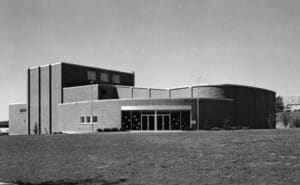
69th and Cass Streets – 1959 to 1985
In 1968, Margre Durham, wife of Charles (founding partner, engineering-architectural giant HDR), became board president. A building addition that year tripled the scene shop and doubled costume space. But OCP struggled to consistently fill its 520 seats. The theatre was $50,000 in debt.
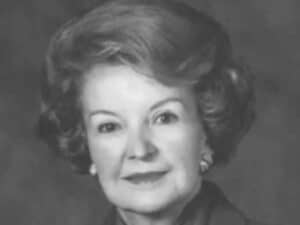
Margre Durham
Teal, OCP treasurer for 25 years, had long kept the budget in line with ticket sales. (The Playhouse box office is named for Clarence and Val Teal.) Durham felt foundation grants and philanthropy had to play a bigger role. In 1974, Charles and Margre chaired a $150,000 drive for renovations.
That summer, Margre was on a search committee that hired visionary director Charles Jones. The next spring, after a tornado tore off OCP’s roof, Charles Durham sent an HDR team to help Jones file $253,000 in insurance claims. Barbara Ford raised $25,000 more for tornado repairs.
Jones soon founded the Nebraska Theatre Caravan, OCP’s professional touring arm, while amping up production quality and staffing. Margre Durham’s foresight about corporate and individual gifts became key in funding Jones’ ambitious plans. The gregarious, visionary Jones cultivated new donors over his 23 years with OCP.
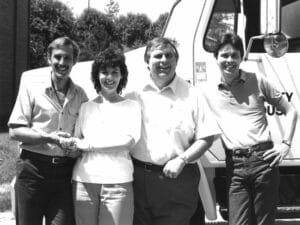
Nebraska Theatre Caravan
In 1980, $500,000 was raised to retire debt, buy a new lighting system, begin an endowment fund and build an orchestra pit. Jerry Hargitt (Northwestern Bell) headed the drive, and Sue Shipley was board chair. The Peter Kiewit Foundation made a $200,000 matching grant. (Kiewit is a global construction and engineering firm.)
In 1983, OCP launched a four-year $6 million drive to add a second stage, office and rehearsal space, classrooms, 92-seat balcony, costume shop, boardroom and expanded lobby. Barbara Ford chaired the board, while Ed Owen (steel firm Owen Industries) headed fundraising. (OCP’s main lobby is named for Ed and Dee Owen. Dee was longtime board secretary.)
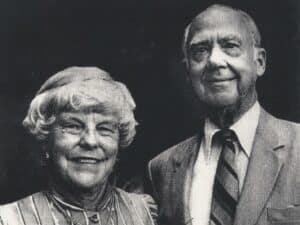
Dee and Ed Owen
The Peter Kiewit Foundation made a $275,000 matching grant. The Owens and Robert Storz (Storz Brewing, Storz Broadcasting) gave $500,000 each. Then Kiewit kicked in another $1 million. The Omaha World-Herald and First National Bank of Omaha gave $100,000 each, ConAgra $50,000. A “Buy a Brick” campaign raised $150,000 in smaller donations. For the final phase Kiewit, lead contractor on the project, gave a $500,000 matching grant, and Storz kicked in another $200,000 to expand parking. (The parking plaza is named for Storz.)
As the dust settled, OCP’s season grew to 10 shows. Jones declared the Playhouse the nation’s largest community theatre.
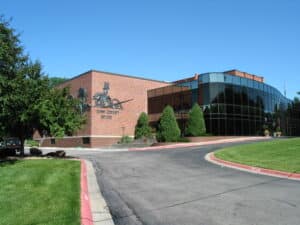
69th and Cass Streets – 1986 and beyond
Three cherries came atop the big expansion. In 1988, the Owens gave $94,000, and OCP’s mortgage was burned onstage. In 1992, Storz donated large wall sculptures for the building’s southeast exterior. And in 1995, partly at the Owens’ prompting, their friend Howard Drew (retired VP, N.P. Dodge) gave $1 million to renovate the 250-seat studio theatre that bears his name.
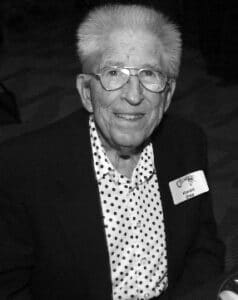
Howard Drew
After Jones suffered a massive stroke, Carl Beck and Susie Collins took the artistic reins for 17 years, starting in 1997, building on Jones’ high standards.
When a 2008 economic downturn led to a financial and leadership crisis, scores of donors, performers and patrons rose to the occasion, closing the money gap, growing the OCP endowment and calming troubled waters. Tim Schmad was OCP’s executive director and Mark Laughlin was board chair when, in 2009, Howard and Rhonda Hawks (he founded Tenaska Energy) made large donations to refurbish the mainstage auditorium and grow OCP’s endowment. The auditorium now bears the Hawks name.
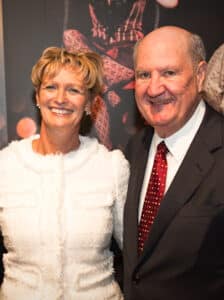
Rhonda and Howard Hawks
During the worst of COVID in 2020-22, executive director Katie Broman and artistic director Kimberly Faith Hickman used innovative programming and health-safety measures to keep OCP’s doors open, while many arts venues shut down. Use of understudies helped overcome viral outbreaks within casts. Federal COVID relief funds kept the Playhouse solvent, thanks to timely applications by savvy finance director Theresa Ross and development director Emily Andres.
2023 reaffirmed Playhouse support from Omaha’s business and philanthropic communities. An urgent need was met for $5.9 million to replace OCP’s heating and cooling system and to repair the roof. Lead donors include Hawks Foundation, Nebraska Department of Economic Development, Walter Scott Family Foundation (former head of Kiewit), Friend of the Playhouse, Peter Kiewit Foundation and more than $260,000 from OCP board members.
Support has also come from loyal individual show sponsors since 1988 — up to $40,000 per show. Top givers: Mutual of Omaha, Immanuel, CHI, First National Bank of Omaha and many OCP board trustees. In 2013, Les Misérables, OCP’s most expensive show at $200,000, was made possible by $115,000 from sponsors HDR, Kiewit and Valmont.
Supporters’ Playhouse ties are often personal, spanning generations. Genevieve Guiou’s daughter, actress Echo Ellick, served OCP for decades as a publicist and board president. (The boardroom is named for them.) Ellick’s husband, Al, was Playhouse Foundation board chair for five years.
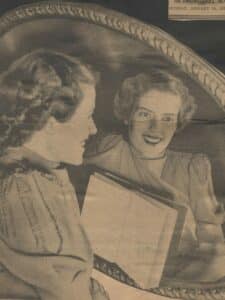
Echo Ellick
Elizabeth “Libby” Davis, daughter and granddaughter of First National Bank of Omaha presidents, starred in Green Grow the Lilacs at OCP in 1941. Later, as the wife of John Lauritzen (also an FNBO president), she hosted many OCP fundraisers. Their grandson Clark Lauritzen (current FNBO president) played Tiny Tim in the 1982 cast of A Christmas Carol. The family foundation gave a major financial boost to OCP’s endowment.
Ed and Dee Owen dated while volunteering backstage in 1941. Their service to OCP spanned more than 60 years. Daughter Carolyn Owen Anderson was a board member when she died in 2023. Her funeral was at the Playhouse.
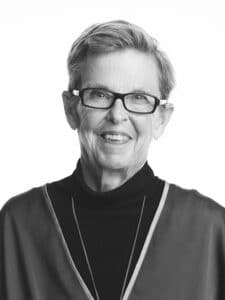
Carolyn Owen Anderson
“Every Christmas morning, Charles Jones would bring a huge basket of fruit to the family, and he and Dad would visit for hours,” said Carolyn’s sister, Peggy Owen Gray. “I never saw Dad happier. The Playhouse was Mom and Dad’s hobby. It’s what they did together.”
Lasting Legacies with Bob Fischbach
As part of our centennial celebration, OCP will share monthly feature-length articles by OCP board of trustees’ member Bob Fischbach that salute key individuals and patrons who made a lasting difference in the legacy of the Playhouse’s first 100 years.
Notifications